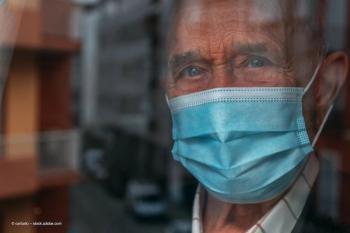
Editorial advisory board member Alexandra Miere, MD, PhD, presents two studies at EURETINA
Dr Miere presented the ACTOR study, illuminating vascular remodeling in patients with neovascular AMD, and the HERMES study, investigating perfusion changes in central retinal vein occlusion
During the 2025 European Society of Retina Specialists (EURETINA) congress, Ophthalmology Times Europe spoke with editorial advisory board member Alexandra Miere, MD, PHD. Dr Miere is an associate professor of ophthalmology, Université Paris-Est Créteil, France, and she is also an honorary research fellow in medical retina at Moorfields Eye Hospital, London.
Dr Miere presented findings from the ACTOR and HERMES studies, both published in the EURETINA journal. The ACTOR study investigates vascular remodeling in patients with neovascular age-related macular degeneration (AMD) who have been treated with ranibizumab. The HERMES study focuses on perfusion changes over 24 months in patients with central retinal vein occlusion (RVO).
Speaking about the prospective ACTOR study, Dr Miere said, "We tried to capture if the vascular remodeling could be predicted for exudative recurrence on [spectral domain optical coherence tomography] SD OCT in the month following the OCT angiography."
"This is a question that has puzzled retina specialists since OCT angiography [OCT-A] has been has been introduced," she explained. "The short answer is no...However, OCT angiography brings other types of information. The two imaging modalities [structural OCT and OCT-A] are complementary and should be used together in our nAMD patients." Neovascularisation remodeling and exudation may not have a causal relationship in cases of nAMD, Dr Miere said, but both provide vital information about the disease and its impact on the retina.
The HERMES study examined perfusion in patients with central RVO. Patients were treated with aflibercept and monitored for 24 months. "In these patients, what we noted by doing ultra-widefield fluorescence angiography and OCT angiography was that, on ultra-widefield fluorescence angiography, the peripheral non-perfusion worsened during time, and we had a very important increase in the ischemic index in these patients with RVO," Dr Miere said. However, despite these findings in the peripheral retina, in the central area, the vascular density on OCT angiography remained stable, she said. "So even though we have a stable visual acuity, and the stable vascular density in the macula area in patients with RVO, we should also always, always, always check the periphery," she emphasised. A worsening in non-perfusion in the periphery can result in potential complications, she warned.
To learn more about the potential risks of peripheral non-perfusion, and hear Dr Miere share her predictions for the future of machine learning in ocular care, watch the full video above.
Newsletter
Get the essential updates shaping the future of pharma manufacturing and compliance—subscribe today to Pharmaceutical Technology and never miss a breakthrough.












































